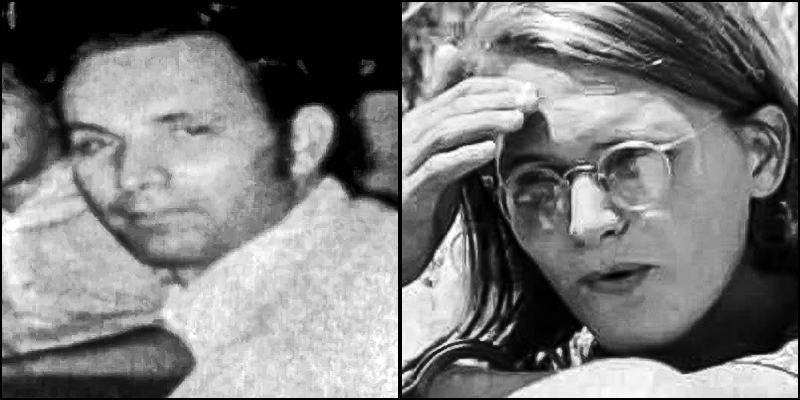
Elmer Wayne Henley Jr., now 66, in a recent mug shot on the left, and at age 17 in 1973 on the right
Elmer Wayne Henley Jr. — the man convicted of helping Dean Corll murder at least six of the at least 28 teenage boys that Corll murdered in Houston — has asked the Texas Board of Pardons and Parole for compassionate release from prison, according to a report by Texas Observer. Henley, who ended the killing spree in August 1973 by shooting Corll to death then calling police, is currently serving six consecutive life sentences.
Henley was last denied parole in October 2015 and is not scheduled for another parole review until October of 2025.
The crimes of Corll, Henley and another teenage accomplice, David Brooks, are still known as the Houston Mass Murders; the term “serial killer” had not yet been coined at the time. The murders were, at the time, considered the “worst example of serial murder in the U.S.,” according to Wikipedia.

Dean Corll, left, shortly before he was killed by Elmer Wayne Henley Jr., and Dean Brown at age 18 in 1973
Officials have said they cannot comment on the conditions under which Henley is asking for compassionate release because such medical information is confidential. Texas Observer explained that “Texas officials rarely grant compassionate release,” noting that The state Board of Pardons and Paroles approved only 76 compassionate release requests in 2019 and 60 in 2020.
Family members of several of the victims have voiced their opposition to Henley’s request. Wilson, the sister of the trio’s last known victim, 13-year-old James Stanton Dreymala, told the Observer via email that she and her family “feel that [Henley] can be treated in prison for whatever is wrong with him. He does NOT deserve to have any compassion for any illness as my brother was not even treated with basic humanity. He should stay where he is until he dies!”
Henley was only 17 years old on Aug. 8, 1973, when he shot and killed Corll and then called the police. At first Henley claimed that he was one of Corll’s intended victims but that he escaped by convincing Corll he would help him torture and kill two other teens — 19-year-old Timothy Kerley and 15-year-old Rhonda Williams, who survived — if Corll would take the handcuffs off him. Corll agreed, but then Henley took Corll’s gun and shot him to death.
After Corll’s other teenage accomplice, 18-year-old David Brooks, turned himself in and confessed, Henley acknowledged that for nearly three years he had been participating in luring teenage boys to Corll’s home where Corll had tortured, raped and killed them, and that he and Brooks had participated in at least some of the murders. Henley said Corll had paid him and Brooks $200 for each victim they brought to him.
Henley then led officers to the boat storage facility Corll rented and in which he had buried 17 of his victims. Henley directed officers to an area near the south end of Sam Rayburn Lake where they found four bodies, and to a beach on High Island, where they found six more bodies. Many of the victims had been friends or acquaintances of Henley and Brown.
Henley was originally convicted on six murders on July 16, 1974, and sentenced to six consecutive 99-year sentences. That conviction was overturned on appeal in December 1978, but he was retried in June 1979 and again convicted and sentenced to six life sentences.
Henley was never prosecuted for the murder of Dean Corll because that was considered self defense.
David Brooks was tried in February 1975 for the murder of Billy Ray Lawrence and the following month was convicted and sentenced to life in prison. He died in prison of COVID-19 in May 2020.
— Tammye Nash













We need to euthanize anyone convicted of any sexual predator crime. No excuses!
Leave him in a not worth being turn lose. He didn’t feel sorry for helping killing young men.